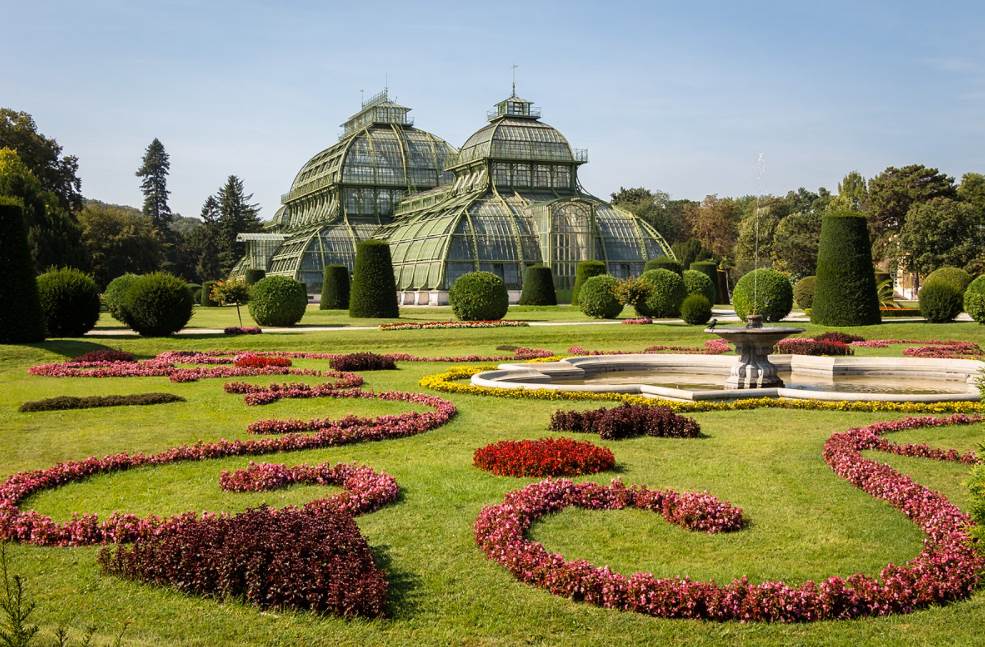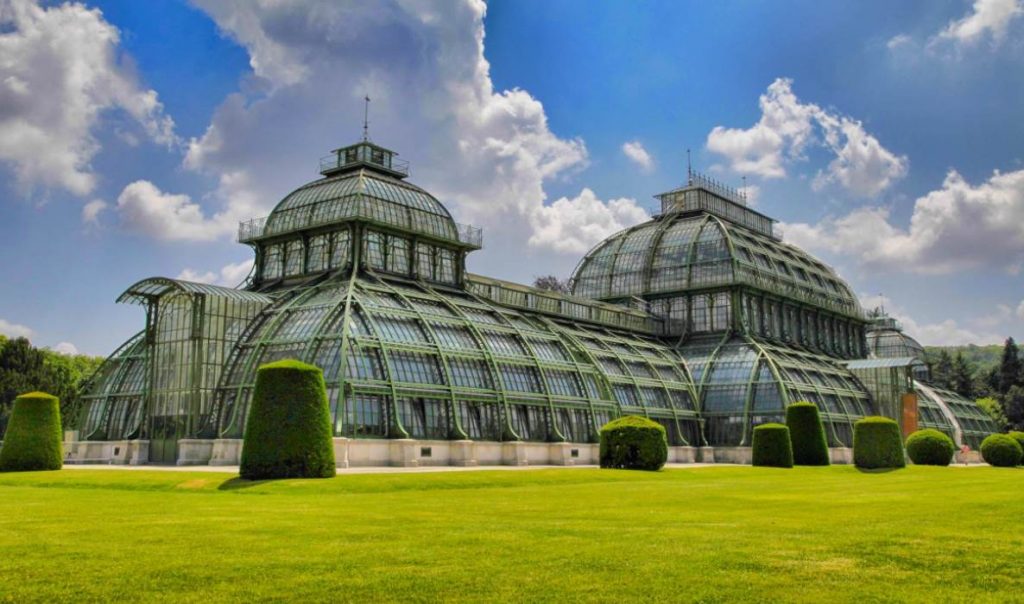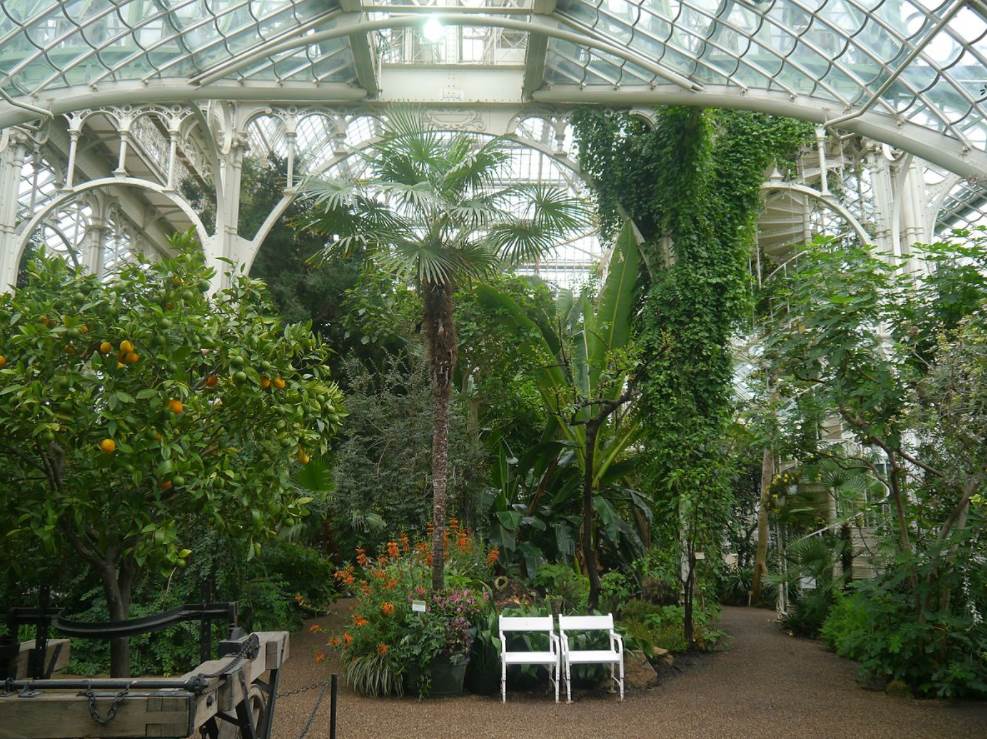One of the largest and most incredible greenhouses in the world is located on the compound of an amazing palace in Vienna, the capital of Austria in central Europe.
In this article, you’ll discover some of the most interesting facts about Palmenhaus Schönbrunn, an architectural masterpiece.
1. It’s located in the park surrounding a famous palace in Vienna
The Palmenhaus Schönbrunn is one of the multiple attractions in the park surrounding Schönbrunn Palace, the former summer residence of the Habsburg rulers.
And what a palace it is! It was built in the exuberant Rococo architectural style and features 1,441 rooms, making it one of the largest palaces in Europe (and that means something).
The greenhouse is located just southwest of this immense building in the western part of Vienna. Just south of the greenhouse you can find the oldest operational zoo in the world as well called “Tiergarten Vienna” which was established in the 18th century.

2. It replaced several much older greenhouses on this site
This particular greenhouse is the largest of the 4 greenhouses that are located within the Schönbrunn Palace Park.
The newest addition to the park was completed in 1904 and is located just west of the immense Palmenhaus. It’s called the “Wüstenhaus Schönbrunn” which translates to “Schönbrunn Desert House.”
The Palmenhaus Schönbrunn has an extensive history because at least 2 former, much smaller, greenhouses were located in this location since the 18th and 19th centuries during the reigns of Emperors Francis I and Joseph II.
3. The building was completed in the early 1880s
The current version of the greenhouse was designed by the court architect at the time, a man named Franz-Xaver von Segenschmid, along with his colleague Sigmund Wagner.
The cornerstone of the building was laid in the year 1881 and it was officially opened by Franz Joseph I on June 19, 1882.
The most prominent features of the architectural design are tree-shaped cast-iron columns and arches that support the enormous glass roof of the structure.

4. Much of the original glass was destroyed during a WWII bombing
The roof of the structure is covered by 45,000 glass tiles, but very few of these are the original late 19th-century ones. That’s because a bombing of Schönbrunn Palace in February 1945 caused a lot of damage to the structure.
It wasn’t until the year 1948 that the rebuilding of the Palmenhaus started and it finally reopened to the public in the year 1953. Although many plant species died during these events, many could be saved by moving them to the nearby Wüstenhaus.
5. How big is the Palmenhaus Schönbrunn
The building is much bigger than it initially looks. It was built with an astounding 600 tonnes of wrought iron and 120 tonnes of cast iron, as it has the following dimensions:
- Length: 111 meters (364 feet)
- Width: 28 meters (91 feet)
- Height: 25 meters (82 feet)

6. It features an incredible collection of plant species
The Palmenhaus Schönbrunn is not only one of the largest greenhouses in the world but also houses one of the most extensive collections of plant species on the planet.
About 4,500 plant species grow in this immense structure and it features two adjoining sections with completely different conditions. The north side features a cold house and the south side features a hothouse, allowing for plants from all around the world to grow here.
7. The oldest resident in the greenhouse is over 3.5 centuries old
The diversity of the plants growing inside the greenhouse at Schönbrunn is emphasized by its oldest resident. You can find an olive tree here that is over 350 years old.
This tree was donated to the greenhouse by Spain in 1974 and although it looks as old as it is, it’s a pretty amazing part of the collection growing inside the greenhouse.
8. It features a critically endangered called a “living fossil”
The olive tree is amazing enough, but nothing beats a plant called a “Wollemia,” a plant referred to as a “living fossil.” That’s because it was completely unknown except for fossil records until its discovery in the year 1994.
This particular genus of coniferous trees only grows at the Wollemi National Park in New South Wales, Australia, and was growing inside a steep sandstone gorge, the main reason why scientists weren’t aware of its existence until the 1990s.
The Wollemia trees inside the Palmenhaus Schönbrunn are some of the few that can be found outside of Australia.



